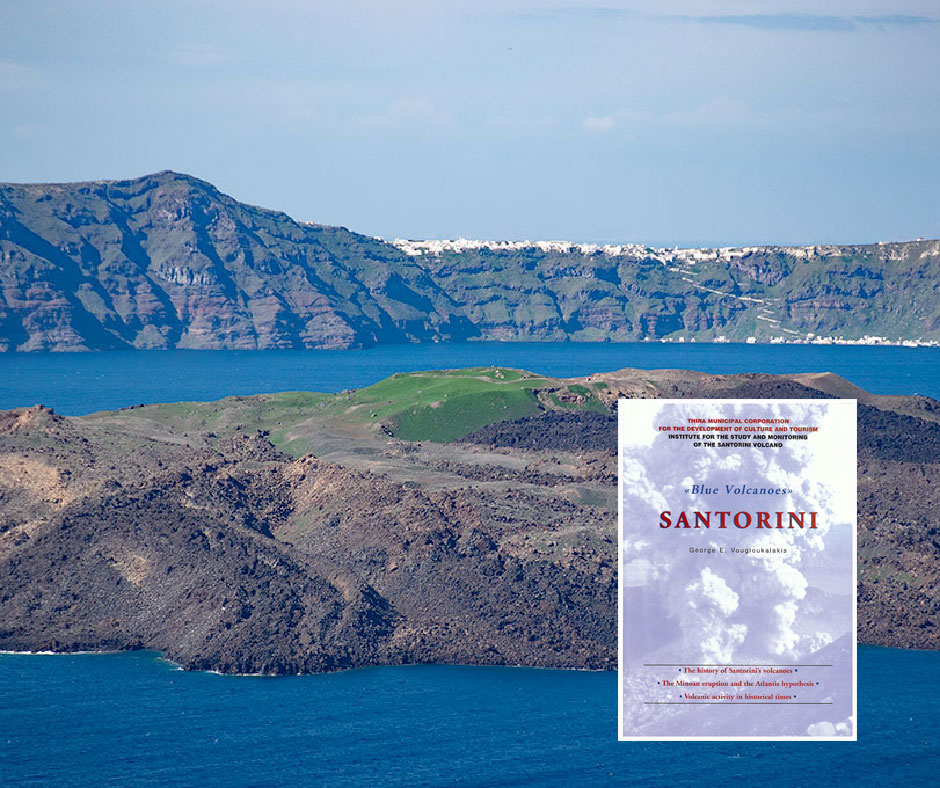Santorini island news
Green Nea Kameni
The view of Nea Kameni these days is unusually astonishing. A part of the volcano is
green and stands out in the volcanic black color.
As explained by the President of The Institute for the Study and Monitoring of the
Santorini Volcano (I.S.M.O.SA.V.), volcanologist Dr. George Vougioukalakis, the
specific area is covered with fine-grained volcanic material from the 1707-1711 and
1866-1870 explosions that can be converted into fertile soil.
Usually the green side of the volcano is seen in the early days of spring, but this
year’s intense rainfall has made its miracle.
Want to read more about the Santorini Volcano? Click here to order the Blue Volcanoes book by Dr. George Vougioukalakis
More about I.S.M.O.S.A.V.
The Institute for the Study and Monitoring of the Santorini Volcano (I.S.M.O.SA.V.) is a non-profit organization, founded in the summer of 1995, whose primary aim is to continue to maintain the operation of the Volcano Observatory and the monitoring networks, which were established under a research program funded by the E.U.
Its main target is the promotion of volcanological research on the island, more specifically how to achieve the most accurate assessment possible regarding volcanic phenomena, and the increased probability of precise forecasting of any future volcanic eruption.
The Institute provides Santorini with an integral monitoring system, which guarantees the timely prediction of a possible volcanic eruption and undertakes the responsibility of disproving any false statements or rumors regarding a negative state of the volcano.
Amongst the founding members, ISMOSAV includes the majority of Greek scientists who participated in the above mentioned E.U. program, members of the Santorini civil authorities and members of the public interested in the volcanic phenomena on Santorini island group.

